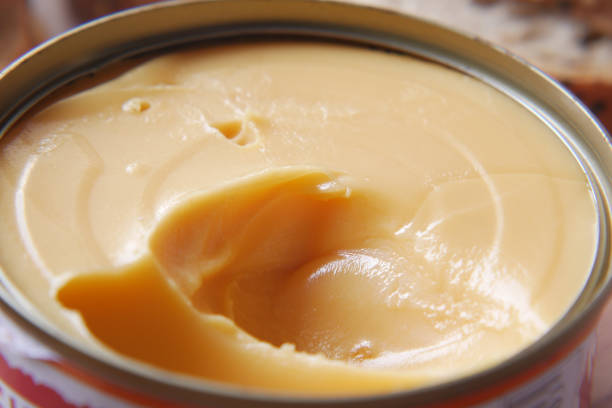Tigernut butter is a nut butter alternative that’s quickly gaining popularity in the culinary world for its uses in cooking and baking. It can be used in a vast number of dishes in all different styles and flavors, and as an added bonus, it’s safe for those with nut allergies.

Read on to explore the many uses of tigernut butter and tiger nuts products, from the basic characteristics to examples of different dishes it can be used in.
What are the Basic Characteristics of Tiger Nut Butter in Cooking?
Tigernut butter is a versatile substitution for many nut butters and can be substituted in almost any dish that includes more traditional nut butters, like peanut and almond butter. Because of its subtle, early, and mildly sweet flavor profile, it harmonizes with many different ingredients ranging from savory to sweet.
Tigernut butter itself comes in different textures, depending on the brand and the manufacturing process, but you can typically count on a uniformly smooth texture. Tigernut butter may be as thick and viscous as peanut butter, but it can also be more liquid-like and runny like a sauce. It’s not usually grainy, unlike many typical nut butters.
Because tigernut butter doesn’t contain any actual nuts (and may not contain other common allergens either, depending on the brand), it’s allergy-friendly and can be used as a substitute for nut butters to make dishes safe for those with nut allergies.
How Can Tiger Nut Butter Be Used in Breakfast Dishes?
Tigernut butter is an excellent addition to your usual breakfast fare, whether that’s a quick smoothie, a full spread of eggs, bacon, and toast, or a filling oatmeal.
Tigernut butter can be added into all kinds of smoothies and works well with a variety of smoothie flavors. It can be used in fruity smoothies, chocolatey smoothies, vanilla smoothies, and protein shakes. Drizzled on top of a smoothie or smoothie bowl, tigernut butter makes an excellent garnish.
Like other nut butters, tigernut spread can also be enjoyed simply spread on toast. Paired with gluten-free bread, it’s a suitable allergy-friendly component of a balanced breakfast, though it works just as well with regular breads like whole wheat and brioche.
Oatmeal and yogurt-based breakfasts can also get a boost of flavor and infusion of nutrients by adding tigernut butter into the mix or as a garnish over the top. Add it to cereal, granola, or muesli to add a nutty flavor without triggering nut allergies!
What Savory Dishes Can Benefit from Tiger Nut Butter?
Tigernut butter can add depth and richness to many savory dishes from cultures all over the world. It makes a great base for tangy, spicy, or umami sauces, bringing a note of earthiness without overpowering the other ingredients for the perfect balance.
Upgrade salad dressings and the like by adding a few tablespoons of tigernut butter before whisking or shaking to combine. Toss with salad components or serve on the side for a refreshing wash of flavor on crunchy greens.
Tigernut butter can also be used to add flavor and texture to sandwiches and wraps. Spread on bread or tortillas and layered with other staple ingredients, it keeps them from drying out and creates a coating of nutty, earthy flavor that compliments many different types of sandwiches.
Can Tiger Nut Butter Be Used in Baking?
Tigernut butter can be a vital component to many baked goods, from cookies, to cakes, breads, and more. In addition to imparting tigernut flavor to the dough or batter, it adds moisture and affects the structure of many types of confections. The oil in tigernut butter helps cookies spread, makes denser cake crumbs, and acts as a base binder for breads.
It can be added as a fat (usually in place of oil or butter) and can be substituted in any time a recipe calls for a nut butter.
What Are Some Creative Ways to Use Tiger Nut Butter in Snacks?
Tigernut butter makes a surprisingly good inclusion in tons of different snack foods. Tigernut spread-based snacks can be just as healthy and nutritious as they are tasty and quick, for an easy grab-and-go bite or a leisurely afternoon nosh. Added to energy balls, the butter makes a great binder for bits of granola, dried fruits, seeds, and other fueling ingredients, holding the balls together.
It’s also excellent as a dip for slices of apples, pears, strawberries, and other fruit, or as an addition to yogurt-based fruit dips. On its own, tigernut spread can be used to top crackers and rice cakes. With additional ingredients, like sliced cheeses and herbs, it can dress up these simple vessels and transform them into elaborate appetizers.
Are There Any Unique Dessert Applications for Tiger Nut Butter?
Tigernut butter and dessert are a divine match, like peanut butter and jelly or mac and cheese. Whether sweetened or unsweetened, the natural sugars in tigernut spread can contrast or compliment other decadent flavors for the ultimate indulgence without the guilt.
As a topping, tigernut butter creates a crown of nuttiness on ice creams and sundaes. As an ingredient, it makes a pleasantly earthy base or creamy, nutty, fudge-like ripples in almost any ice cream (including allergy-friendly ice creams like gluten and dairy free ice cream).
It can also be an asset to the flavor and texture of many puddings, adding even more silkiness to plush puddings in flavors like chocolate, butterscotch, vanilla, and beyond.
Another application for tigernut butter in dessert is as a filling in pastries for a creamy center wrapped in flaky or pillowy dough. Swap in tigernut butter as a healthy alternative in place of sugary frostings and fillings in donuts, tarts, croissants, and more.
Adding Tigernut Butter to Dishes
In conclusion, tigernut butter makes a valuable addition to almost any dish – sweet or savory, breakfast, lunch, dinner, or in-between. It adds a subtle, nutty sweetness that rivals nut butters without adding common allergens to a meal, and can be used in most baking applications in place of fats or other nut butters.



